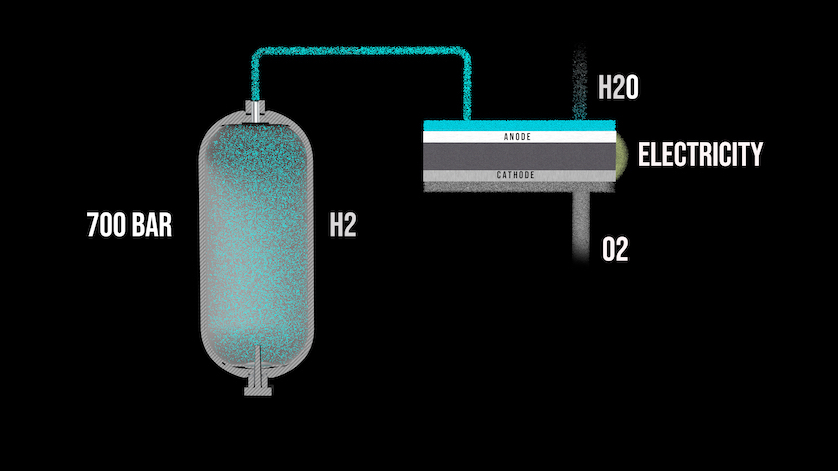
The hydrogen tanks of fuel cell electric vehicles are under very high pressure. For safety and reliability, the pressure sensors and pressure transmitters in FCEVs must be able to withstand corrosion, vibration and shock, and hydrogen permeation/embrittlement.
A key criterion when choosing a particular hydrogen system is the amount of space available: the more fuel cells in the vehicle, the greater the driving range. Tank pressure is another important factor: the higher the pressure, the more hydrogen the vehicle can carry, and the longer its range.
A tank pressure of 700 bar (~10,150 psi) is standard for cars. It used to be that the majority of buses, trucks, and mobile machinery had tanks with half that pressure. But a rethink is currently taking place, and the car standard is increasingly being applied to trucks and buses so they can go longer between refueling.
The Role of Pressure Sensors in Hydrogen Vehicles
As the compressed hydrogen must drop from more than 5,000 or 10,000 psi to atmospheric pressure (~15 psi), pressure sensors play an important role in FCEVs. Furthermore, it is not enough for the sensors to be certified as suitable for hydrogen; they must also be developed specifically for use in tough operating conditions: shock and vibration, pressure spikes, moisture, extreme temperatures, and electromagnetic radiation. For example, IEC 60068-2-27 and IEC 60068-6 outline requirements for shock and vibration resistance, respectively. Standard industrial transmitters do not meet these and other specifications.
WIKA’s Pressure Sensor for Hydrogen EVs
WIKA’s MH-3-HY OEM pressure sensor meets the stringent requirements for use in FCEVs:

MH-3-HY OEM pressure sensors
Vibration resistance of 20 g and shock resistance of 500 g- Resistance to pressure spikes with a CDS (cavitation dampening system)
- IP67 ingress protection with hermetically welded thin-film measuring cell
- Temperature range of −40°F to 185°F (−40°C to 85°C)
- Metallic shield for electromagnetic compatibility (EMC), even under exposures of ≤ 100 V/m; EMC certification in conformity with 72/245/EEC
- Case made of PBT, a highly resistant glass-fiber reinforced plastic commonly used in the automotive industry
- Wetted parts made of 2.4711 stainless steel (Elgiloy®), an alloy with excellent corrosion resistance and high fatigue strength to reduce susceptibility to signal drifts and hydrogen permeation/embrittlement
The MH-3-HY currently has EC79/2009 approval for 20…600 bar (290…8,700 psi) ranges. In the near future, WIKA will be extending this pressure sensor’s range to 900 bar (13,050 psi) to fulfill the future requirement of the increased hydrogen tank pressure in commercial and industrial FCEVs.
Signal drift is an issue whenever pressure sensors are used in hydrogen applications. This is because hydrogen atoms diffuse through even high-grade steels, given high enough pressure and temperature. When they recombine to form H2 in the sensitive parts of a sensor, the Wheatstone bridge becomes imbalanced due to the change in the individual resistances. Gold-plating on a flush sensor prevents hydrogen permeation and is, therefore, recommended for high-temperature hydrogen applications, whether stationary or mobile. Gold-plating is an option on the S-11 flush pressure transmitter and IS-3 pressure transmitter.
The Future of Hydrogen-Powered Vehicles
In both governments and the marketplace, the tide is beginning to turn. The global consensus is coalescing around green hydrogen as the most convenient and sustainable way to power personal and commercial vehicles of the future.
To stay on top of this trend, more OEMs are considering ways to add hydrogen technologies to their business. WIKA has a range of high-quality pressure instruments suitable for hydrogen application, from vehicle components to fueling stations and gas-supply systems. Contact our pressure specialists for more information, including the latest regulatory requirements and approvals for hydrogen systems.
This article is the last of a three-part series on FCEVs. Don’t miss the previous two articles: Momentum Gathers for Hydrogen Vehicles and Hydrogen Mobility: The Future of Clean Engines Meets Today’s Standards.

